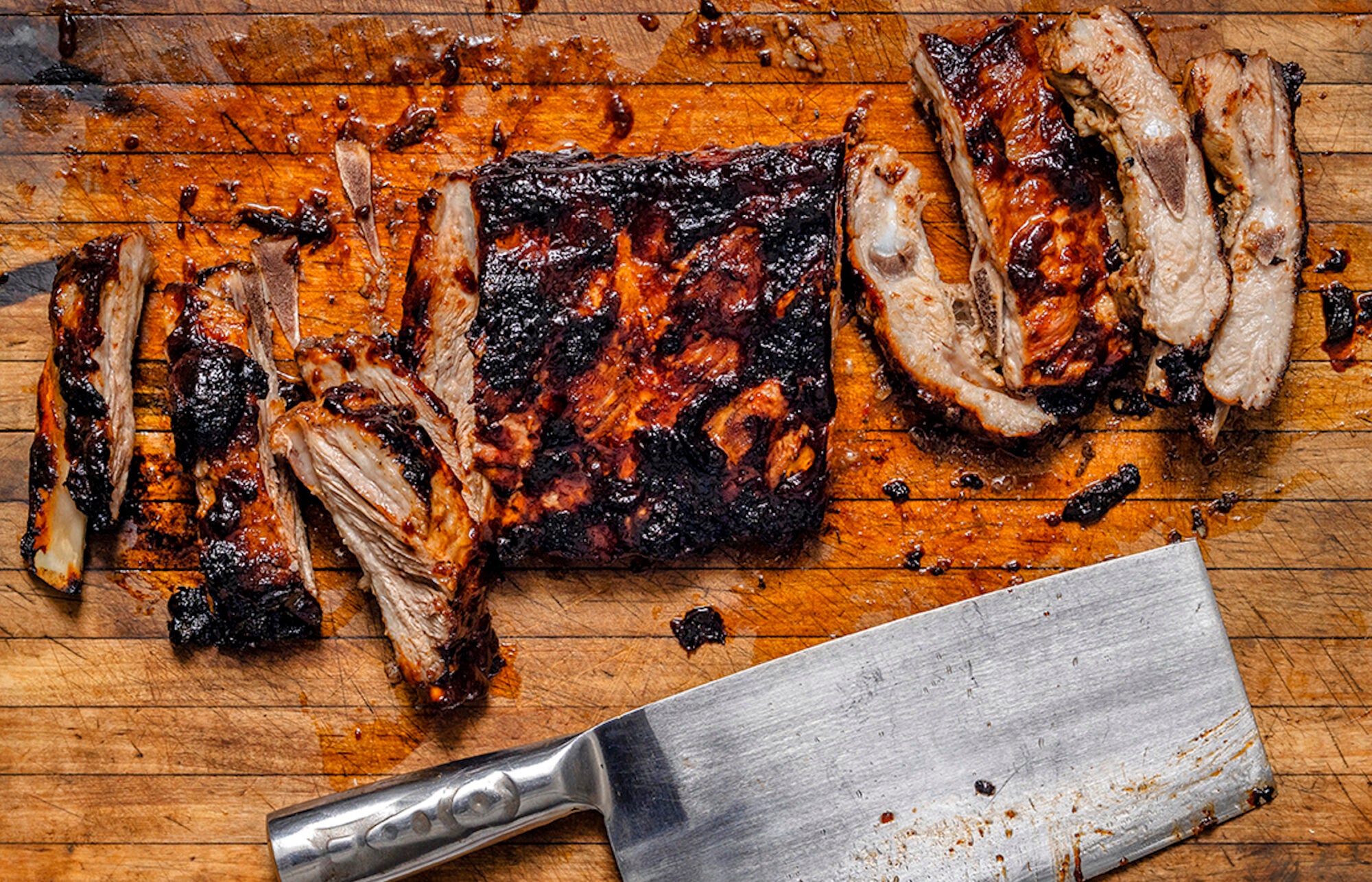
In praise of oven ribs, the more-practical, year-round answer to pit smoke
Barbecued pork ribs, particularly the baby back variety, are hands down my favorite food. It’s been the case since I was old enough to say, “A full rack, please.” I interviewed my mom, Cheryl, for my new book, Food IQ: 100 Questions, Answers, and Recipes to Raise Your Cooking Smarts, about this childhood obsession. “It was always your preferred vacation food, especially during road trips,” she recalled. “Walt’s Hitching Post in Kentucky, across the bridge from Cincinnati, and local places in Kalamazoo, like Damon’s and Fricano’s, were your favorites. You were never a boy who was afraid of a messy meal.”
So here’s the thing about these ribs that I loved so much. They were almost always baked in the oven and didn’t involve a whisper of smoke, be it naturally occurring from incinerated post oak or the liquid kind (yuck). Smoked ribs, the ones with the pinkish-gray flesh that make your hands smell like smoke for hours after your meal, require smoking to get that way. You’ll need a barbecue setup where meat is smoked (and cooked at a low temperature) with hardwood to properly barbecue ribs. I’ve enjoyed pit-smoked ribs in Chicago, Los Angeles, Atlanta, and Memphis. I’ve sought out American-style ribs in Paris, London, and Seoul.
Many barbecue cookbooks will tell you how to smoke using a Traeger grill or a Big Green Egg, or how to build your own smoker with cement blocks. Two really good ones are just about to be released, Bludso’s BBQ Cookbook and Life of Fire. Kevin Bludso and Pat Martin, the authors of these manuals for low-and-slow smoking, may take issue with my approach, and I am okay with that. This is my truth. Even after 30 years of eating great ribs around the world, my mom’s ribs are the ones I return to.
Great ribs—juicy, fall-off-the-bone ribs—might not require a $1,500 smoker, but they do need to be cooked slowly (for more than three hours) at a consistent 225ºF in a moist environment. The trick to cooking ribs properly is to keep them from drying out as they cook. The best way to do this in a conventional oven is to season the ribs, then wrap them in plastic wrap and tin foil, then bake them. The plastic locks in the moisture, while the foil keeps the plastic from burning.
I like to start with a simple dry rub of sugar, Diamond Crystal kosher salt, black pepper, chile powder, cumin, onion powder, and garlic powder. If you choose to add sauce, I like to slather it on at the very end and crank the oven up to broil for 15 minutes, just until the ribs are caramelized and slightly chewy. Rest for five minutes after that, and you’re good.
It’s March, and spring is being spring. But while your grills and smokers may still get a dusting of snow, there’s no reason to miss out on ribs—ribs that are fit for the great indoors.